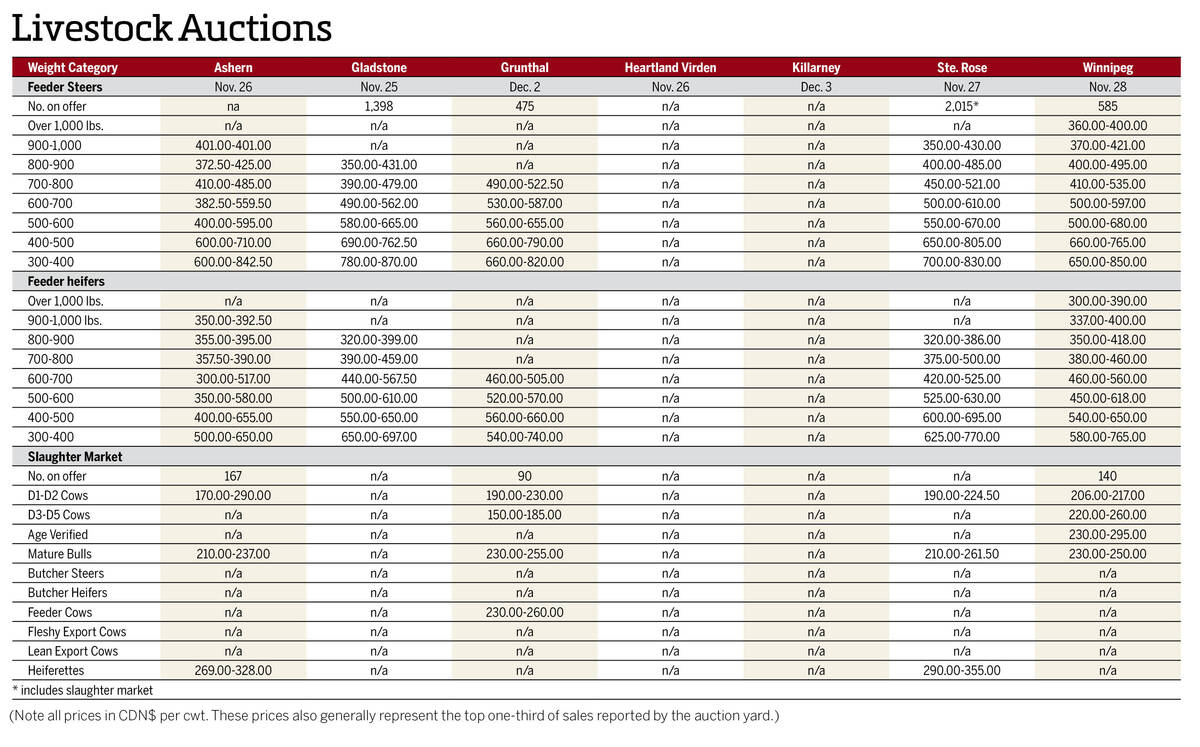Harvest operations are in their early stages across Western Canada, leaving the canola market in a somewhat precarious position awaiting news and biding time until there’s a clearer picture on the size of this year’s crop.
The November contract held in a rather narrow $30 per tonne range in early August, between $770 and $800, with several attempts at breaking lower thwarted by ideas that canola is relatively cheap compared to other oilseeds.
Seeded canola area in the country, at 22.1 million acres, was up by 3.3 per cent on the year, but the consensus in the trade seems to be that actual production will likely come in at or below the 18.2 million tonnes grown in 2022.
Read Also

Manitoba cattle prices, Dec. 3
Cattle prices from Manitoba’s major livestock auction marts during the week Nov. 25-Dec. 2, 2025.
Australian production is also unlikely to live up to the record-large level grown last year, which will leave exportable world supplies of canola on the tighter side.
Statistics Canada releases its first production estimates of the crop year on Aug. 29.
Wide crush margins of well over $200 per tonne imply that canola is still cheap compared to its product values, which should lead to demand rationing down the road. That means prices could eventually move back above $800, but the timing of any rallies may be delayed by seasonal harvest pressure.
In the United States, the winter wheat harvest is nearing completion and spring wheat is also starting to come off the fields. The soybean and corn harvests will be later, but are not too far away.
After a hot and dry start to the U.S. Midwest growing season, forecasts generally turned milder and wetter into the end of August, which caused traders to take some of the weather premiums out of corn and soybean futures. Rising production estimates out of South America were another bearish influence in the background.
The U.S. Department of Agriculture released much-anticipated production estimates Aug. 11, pegging soybean production at 4.205 billion bushels. That was down by 95 million from the June estimate and at the lower end of trade expectations. Ending stocks for 2023-24 were cut to only 245 million bushels, down from an anticipated 300 million in June and below the 260 million bushels of carryout expected for the current marketing year.
Average U.S. corn yields were pegged at 175.1 bushels per acre by the government agency, which would still be up on the year but down from the 177.5 bu./ac. forecast in June. Total corn production for the country at an estimated 15.111 billion bushels was cut by about 200 million from June, but still well above last year’s 13.73 billion bushel crop.
New-crop corn ending stocks were pegged at 2.202 billion bushels, down by 60 million from June, while the old-crop carryout was raised by 55 million bushels – now at 1.457 billion.
















